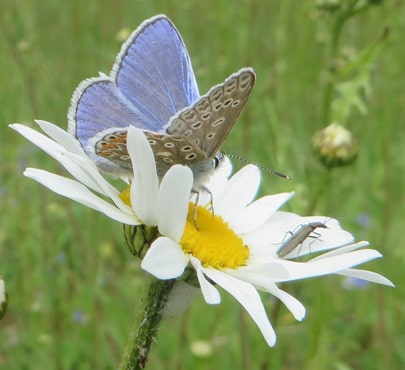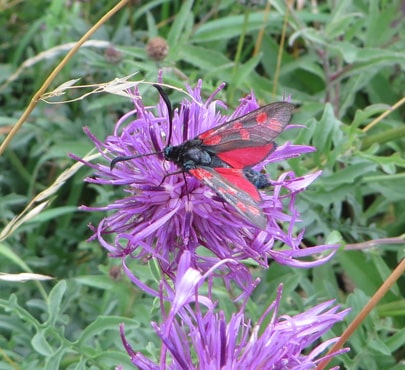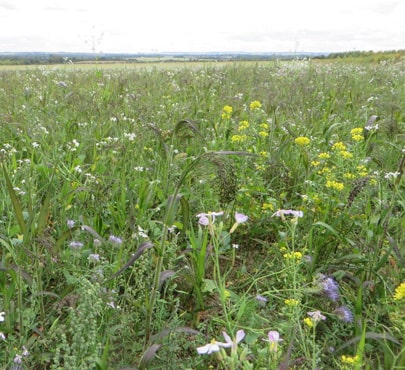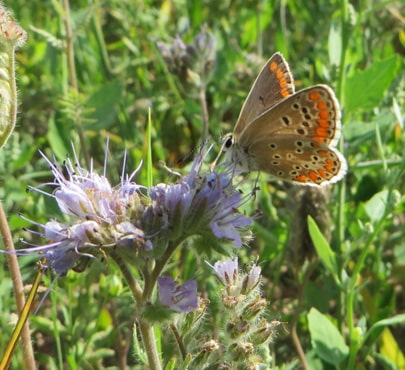Meadows on Magog Down
Magog Down is former arable farmland, acquired in 1989. The Magog Trust manages the site to maintain a delicate balance between conservation and quiet recreation. It is now a County Wildlife Site. Both the North and South Down meadow areas were sown with native species of grasses and wildflowers to restore the areas to chalk downland. These areas are carefully managed by sheep grazing or hay cuts so that the herbs, grasses and wildflowers which are adapted to the dry, thin chalk soils can flourish. Magog Down is significant in the wider chalk landscape of South Cambridgeshire. It is one of a network of chalk grassland fragments including reclaimed chalk pits which together form a series of stepping-stones enabling species to move more easily across the landscape.
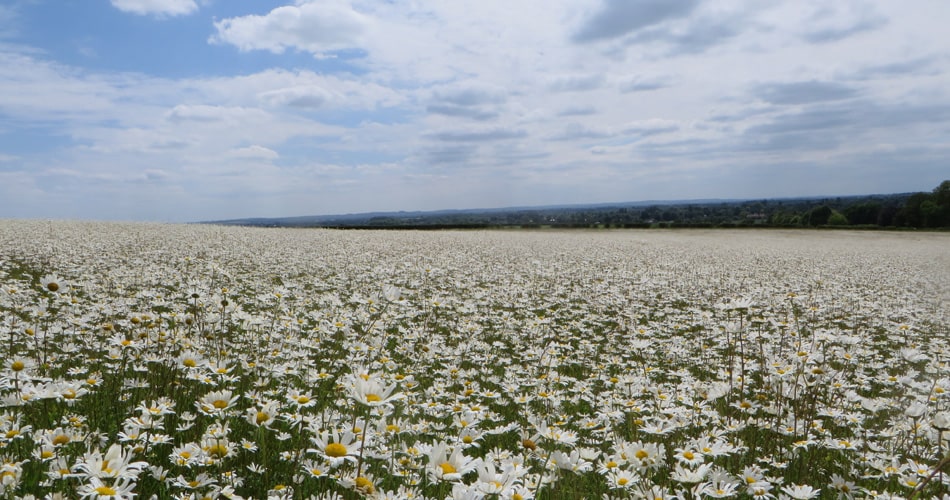
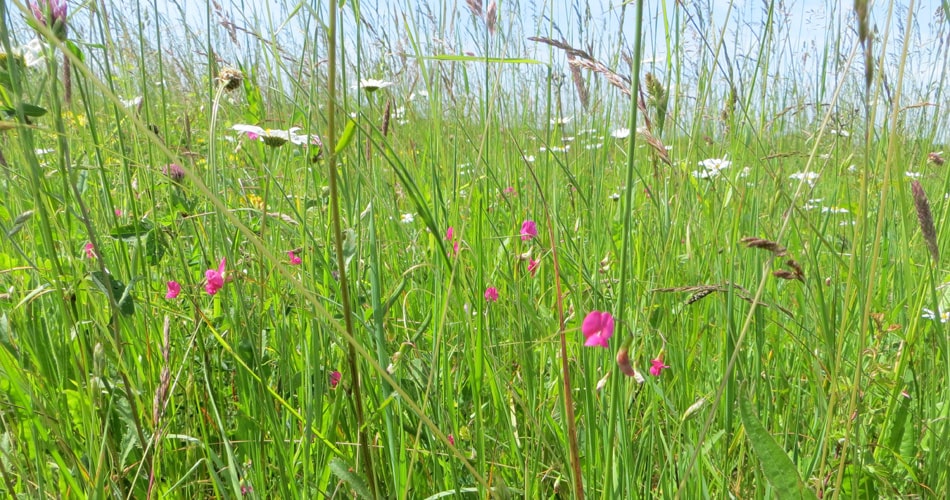
Meadow areas managed by the Magog Trust
Chalk grassland has an incredibly rich and diverse range of plant and insect life with many nectar-rich flowers and herbs, and native grasses. The meadows at Magog Down are home to many insects including solitary and social bees, moths, butterflies and beetles. Wildflowers provide nectar and many of the grasses are food plants for grassland moth and butterfly caterpillars.
The Magog Down is an ever-improving wildlife haven for native species of flowers, grasses, invertebrates, birds and mammals.
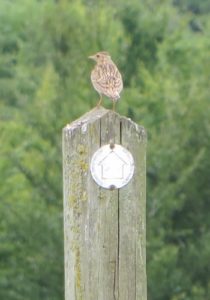
On the North Down half of the area is given a late summer hay cut each year, leaving long grass areas with seed heads for overwinter feeding and shelter for the resident skylark population and many other birds, small mammals and invertebrates. Skylark numbers nationally have more than halved but contrary to this trend we have maintained a good population on the North Down. The skylarks nest on the ground in the grass areas and biennial cutting ensures that there are areas of short grass with some bare patches where they can easily find invertebrates to feed their chicks.
Removal of hay keeps the soil fertility low which in turn restricts the growth of coarse grasses and small shrubs which compete with the grassland flowers. On the South Down the meadow areas are grazed by sheep to conserve the grassland habitat. Grazing achieves a variety of grass sward heights and density, with the sheep moved between areas under a planned programme.
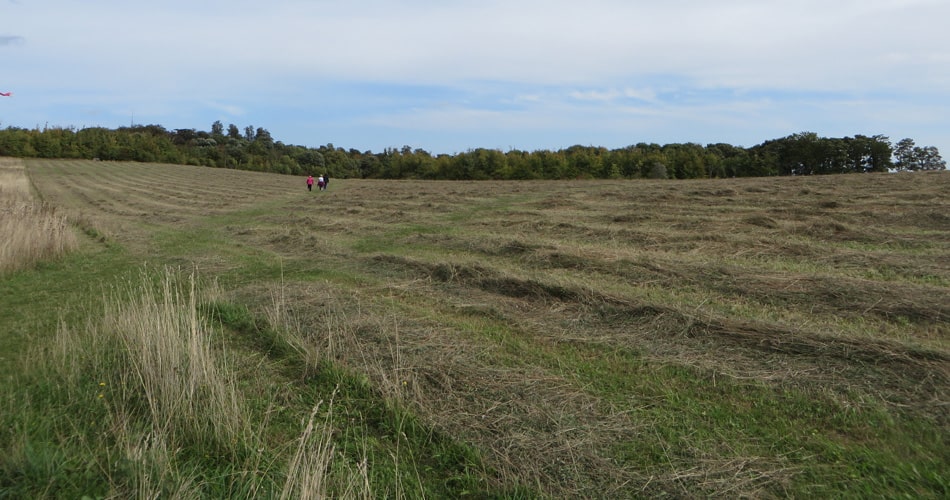
Meadow areas on North Down are cut on rotation to provide overwintering for skylarks and other wildlife
You may have seen the new scrape projects, one in the Little Trees Hill Clunch Pit and the other on North Down. These should provide many new habitats designed to further increase biodiversity. The surrounding banks provide more shelter than the flat areas of exposed chalk, leading to a varied structure in the vegetation. This in turn encourages a greater diversity of invertebrates including butterflies and moths, beetles and solitary bees and wasps. The bare areas on the soil banks provide suitable nesting sites for solitary bees.
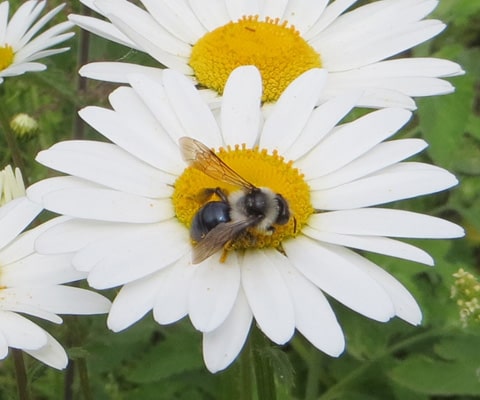
The solitary bee Andrena cineraria.
They are often known as mining bees because they nest in bare patches of ground.
Horseshoe Vetch Hippocrepis comosa growing on the South Down. It is a low, spreading plant which grows on chalk where the turf is sparse and short. Increasing its extent contributes towards encouraging scarcer butterflies such as the Chalk Hill Blue which relies on it for its caterpillar food plant. For this reason. new locally sourced plants have also been planted on the North and South Down.
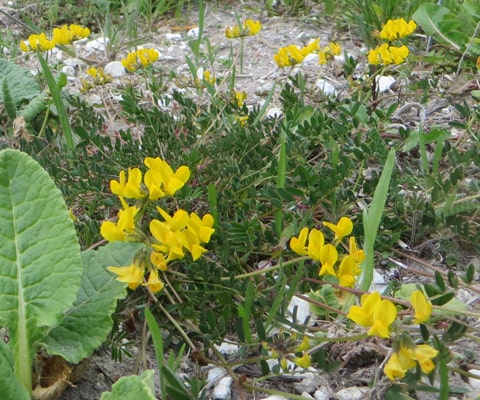
Horseshoe Vetch (Hippocrepis comosa)
The Magog Trust continues to improve and enhance the habitats for wildlife, while at the same time keeping undisturbed areas for wildlife shelter, nesting and feeding. A ‘mosaic’ of differing vegetation heights and density around the Magog Down site as a whole supports a greater variety of plants and wild flowers, and insects and wildlife which flourish with them.
Along the margin of the arable field at the bottom of the South Down, an annual seed mix is sown every year which provides a nectar-rich habitat for insects and seeds for birds to feed on in the winter.
All photographs by Claire Beale.

